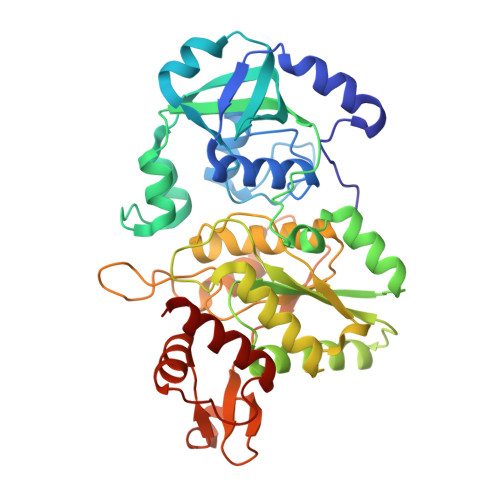Structural basis for the substrate recognition mechanism of ATP-sulfurylase domain of human PAPS synthase 2.
Zhang, P., Zhang, L., Hou, Z., Lin, H., Gao, H., Zhang, L.(2022) Biochem Biophys Res Commun 586: 1-7
- PubMed: 34818583
- DOI: https://doi.org/10.1016/j.bbrc.2021.11.062
- Primary Citation of Related Structures:
7FH3, 7FHA - PubMed Abstract:
Sulfation is an essential modification on biomolecules in living cells, and 3'-Phosphoadenosine-5'-phosphosulfate (PAPS) is its unique and universal sulfate donor. Human PAPS synthases (PAPSS1 and 2) are the only enzymes that catalyze PAPS production from inorganic sulfate. Unexpectedly, PAPSS1 and PAPSS2 do not functional complement with each other, and abnormal function of PAPSS2 but not PAPSS1 leads to numerous human diseases including bone development diseases, hormone disorder and cancers. Here, we reported the crystal structures of ATP-sulfurylase domain of human PAPSS2 (ATPS2) and ATPS2 in complex with is product 5'-phosphosulfate (APS). We demonstrated that ATPS2 recognizes the substrates by using family conserved residues located on the HXXH and PP motifs, and achieves substrate binding and releasing by employing a non-conserved phenylalanine (Phe550) through a never observed flipping mechanism. Our discovery provides additional information to better understand the biological function of PAPSS2 especially in tumorigenesis, and may facilitate the drug discovery against this enzyme.
Organizational Affiliation:
Key Laboratory of Medical Epigenetics and Metabolism, Institutes of Biomedical Sciences, Shanghai Medical College, Fudan University, Shanghai, 200032, China.
















